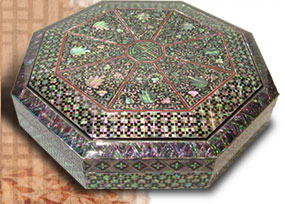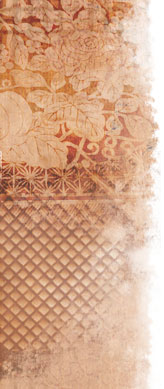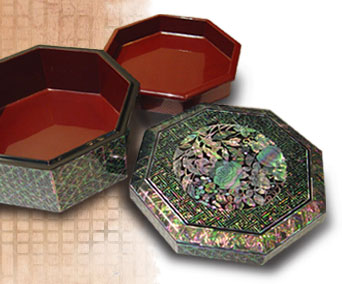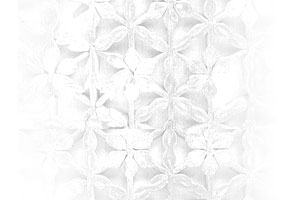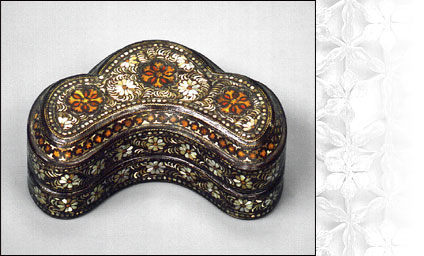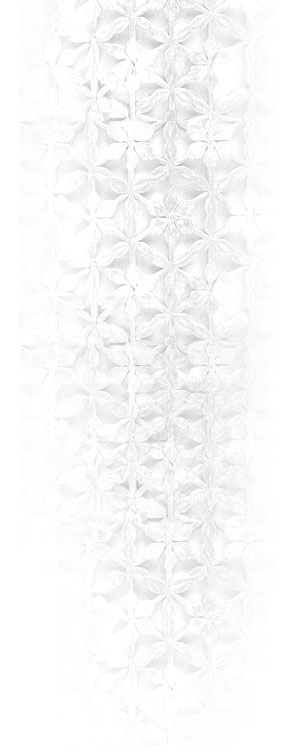Lacquered Tri-Leaf Container Inlaid with Mother of pearl and Tortoise-Shell Chrysanthemums and Arabesques Goryeo, 12th Century This exquisite mother of pearl inlay work is believed to have been a cosmetics container used by a noble lady during the Goryeo period. The heavily embellished surface, as well as the elaborate shape of the container, is a glimpse into the lavish lifestyle of Goryeo’s ruling class. It is widely regarded as one of the best examples of Najeon Chilgi made when the art was at its peak. Najeon Chilgi art changed in design when the Goryeo Dynasty was overthrown by a group of Confucian scholars and the Joseon Dynasty was born. The opulent decorations preferred by Goryeo aristocratic families were now replaced by much simpler and more natural designs that reflected the austere lifestyle recommended by Confucian teachings. The use of colorful tortoise s and wires of precious metals disappeared while new artistic motifs, such as maehwa blossoms and bamboo, flowers and birds, were introduced. The focus was then placed on capturing simple scenes from nature rather than making elaborate designs using abstract patterns. The new trend persuaded Joseon artisans to try The city of Tongyeong is well-known in Korea for its wonderful seascapes, but what makes it more famous is the beauty created by the traditional art of mother of pearl inlaying. For hundreds of years, Tongyeong has been one of the main producers of fine mother of pearl inlay works in Korea. In fact, in 1604, when King Seonjo of the Joseon Dynasty decided to set up a major naval base in Tongyeong, the city began to gain a nationwide reputation for high-quality mother of pearl gifts and artworks. Following the establishment of the naval base, the Joseon government set up 13 government-sponsored workshops to help bequeath the tradition of making Najeon Chilgi (literally ‘lacquer ware inlaid with mother of pearl designs’) to future generations. Najeonjang Song Bang-ung was born in Tongyeong, home of Korean Najeon Chilgi. His father, Song Ju-an, began to study mother of pearl inlaying at the age of 17 and eventually dedicated his life to the art. In 1979, the Korean government designated him as a Master Craftsman of Kkeuneumjil, or mother of pearl cutting, and appointed his art as ‘Important Intangible Cultural Property No. 54.’ Song Senior held this distinguished title until his death in 1981. His wife, the mother of Song Junior, was a devoted woman who did everything she could to help her husband and raise their children even though they were poverty-stricken. View the master's works |
||||||||||||
|













